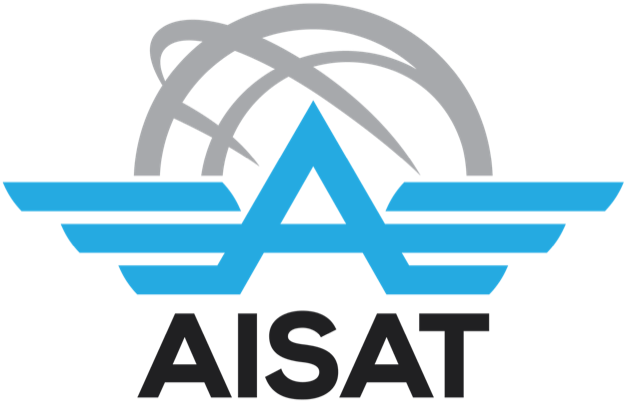Andrei Catulpos
September 30, 2022
If a balancing scale were to appear with the pros and cons of e-learning and in-person classes on each side, which one do you think weighs heavier? Would it outweigh the other? Or would it be both?
For the past two years, students have only been limited to the online setup and have since adapted to its bleak and isolated setting—accepting the possibility of the new normal permanence. But on the 1st day of August, the year 2022, the Asian International School of Aeronautics and Technology (AISAT) finally permitted face-to-face classes on every year level. This means not only in-person interaction for laboratory activities but also in classroom lectures just like the way it was before the pandemic; a new period of adjustments for students who had already been accustomed to e-learning.
In-person learning permits direct interaction among students and teachers; providing means for everyone involved to converse personally which is very important for greater clarity and understanding than in online learning. Although the advantages of face-to-face classes greatly outweigh that of the online setup, most still find it taxing to return to our pre-pandemic ways, with challenges now faced for the first time or relearning to overcome them.
“Medyo mahirap kasi ikaw nalang mag-isa,”
Ms. Reign Guinto, the SSC Treasurer of S.Y. 2022-2023, soberly retells the tough progress she had endured on her own while transitioning into face-to-face classes,
“Yung challenge in managing finances kasi malayo sa family, time management, tapos medyo challenging pa yung adjustments in socializing,”
detailing how restricted we were in making and maintaining new friendships during lockdowns. Nonetheless, Ms. Guinto preferred the online classes for her experience stating that face-to-face classes are more expensive.
Home Comfort: For non-Davao residents moving to a new place with unfamiliar faces, homesickness has been a prevalent experience as each of us step into our new milestone—Independence—Now relying on ourselves without the aid of guardians or the decades of comfort given in our homes. For some, the struggle is different when it’s living with strangers to save rent fees; getting used to that feeling of an unfamiliar presence in your personal space, and working with them to survive.
Financial Responsibility: Everyone would agree that one of the benefits of an in-person setup is the constant stream of allowance. Though for some of us studying far from home, managing finances is a small price to pay in exchange for independence—having to balance expenses between wants and needs, or prioritizing one over the other. Self-disciplining when it comes to money feels a lot harder now when survival is on the line.
Socializing: Comparable to the anxiety and excitement one feels when entering their new school for the first time, many AISAT students, especially those who’ve spent their first two years only restricted to online classes, find it arduous to engage in social interaction and adjust to a new environment after years of isolation. These first few awkward conversations also tested each student’s friendship compatibility in actuality.
Even Ms. Eileen Baluso, a third-year student studying Bachelor of Science in Aircraft Maintenance (BSAMT), agreed with Ms. Guinto’s sentiments, “nakakapanibago na ngayon kasi may health protocols nang susundin compared dati,” She added. However, despite these challenges, Ms. Baluso gleefully preferred to take the face-to-face classes because of the course she was taking. “Kasi we’re dealing with the technical aspect, yung course natin hindi enough for simulations lang—mas better talaga if actual or hands-on.”
New Normal: The resumption of face-to-face classes does not only mean returning to the old ways, but it’s also incorporating the strict safety protocols to avert the spread of Covid-19 and its mutated variants; adding face masks, wipes, and hand sanitizers into the mix of necessities. Additionally, students now need to be extra cautious and health-oriented because even the slightest of symptoms could mean quarantine or a certain postponement of an examination.
Time Management: E-learning may have given us full control of our time and schedules, but in-person classes demand more: energy, time, effort, and resources. Though the latter setup is preferable in many ways, the majority would still agree that the former setup is “chillaxed” – a combination of chill and relax, as some would phrase it “kay tuplok-tuplok lang man sa screen” and adjusting back to waking up early and enduring long stale transportations is a bummer.
Efficiency: Finally, the realization that may it be in full or limited, face-to-face classes demand more effort but also returns more learning. For some of us, retaining knowledge is much harder online than in the classroom. As Ms. Baluso had stated, for practical courses such as ours, hands-on training is far more effective than just watching simulations on screen; not only practicing each student’s visual retention but also their muscle memory. Mistakes in practice are bound to happen and correcting them early on in person is much more effective in stopping a cycle of malpractice before it even begins.
Nonetheless, both the pandemic’s prolonged lockdown and the resumption of classes gave us students an opportunity to experience both setups, we were able to understand which works best for us or which doesn’t, and which one’s plausible for us but still challenging—opening our minds to whole new perspectives. Though one thing’s for sure: every obstacle can be endured with the right judgment, the right amount of sheer determination, and the help of the right people. In the end, it all boils down to our self-discipline, putting both our hearts and brains into everything that we do.
These shared experiences regarding the two setups have left us students with mixed reactions and opinions on which one’s better. So, if a balancing scale were to appear with the pros and cons of e-learning and in-person classes on each side, which one do you think weighs heavier? There would be more than one answer. We all have our own experiences and capabilities; therefore, we all have our balancing scales. The real question is, which one weighs heavier for you?

